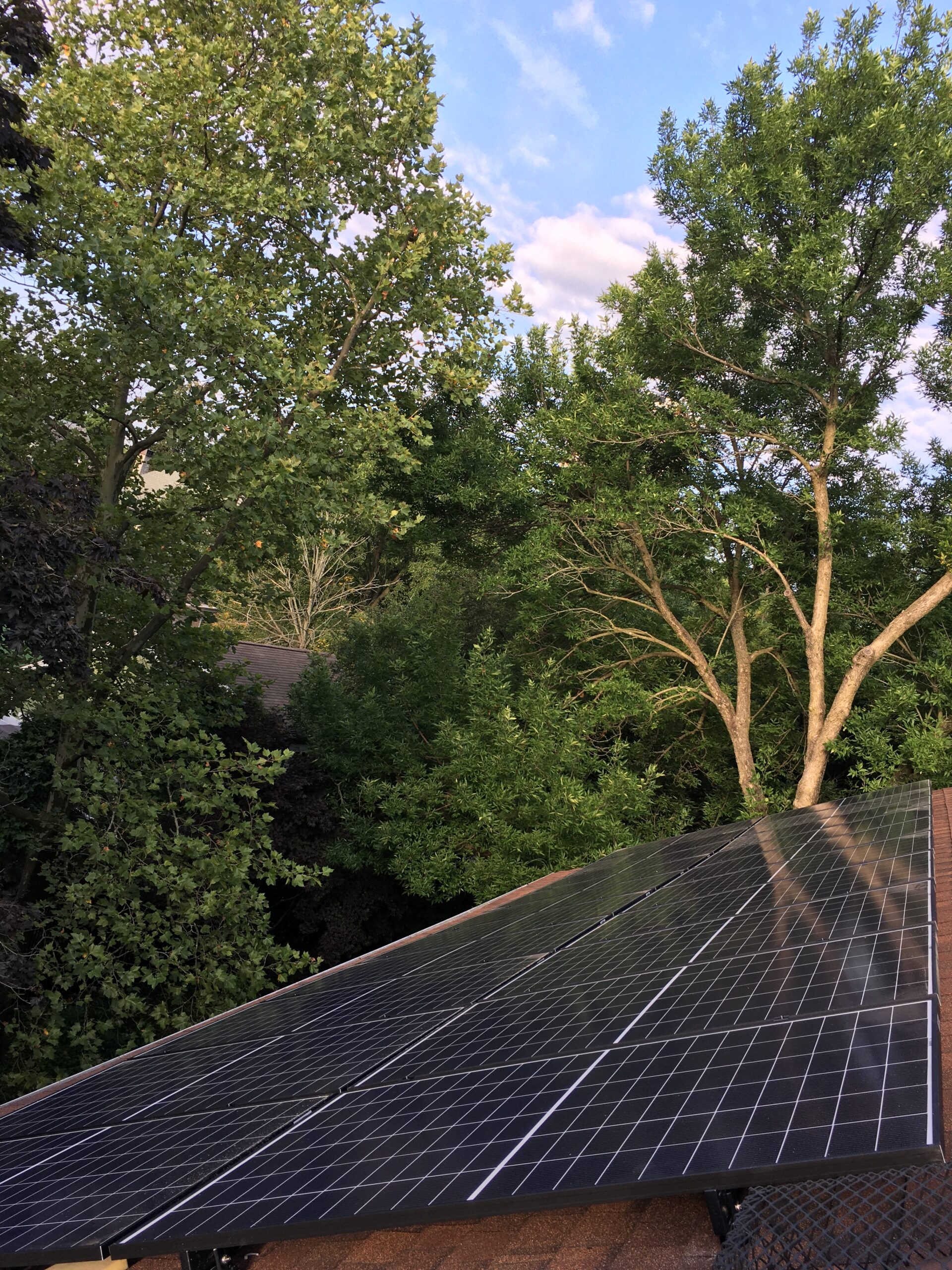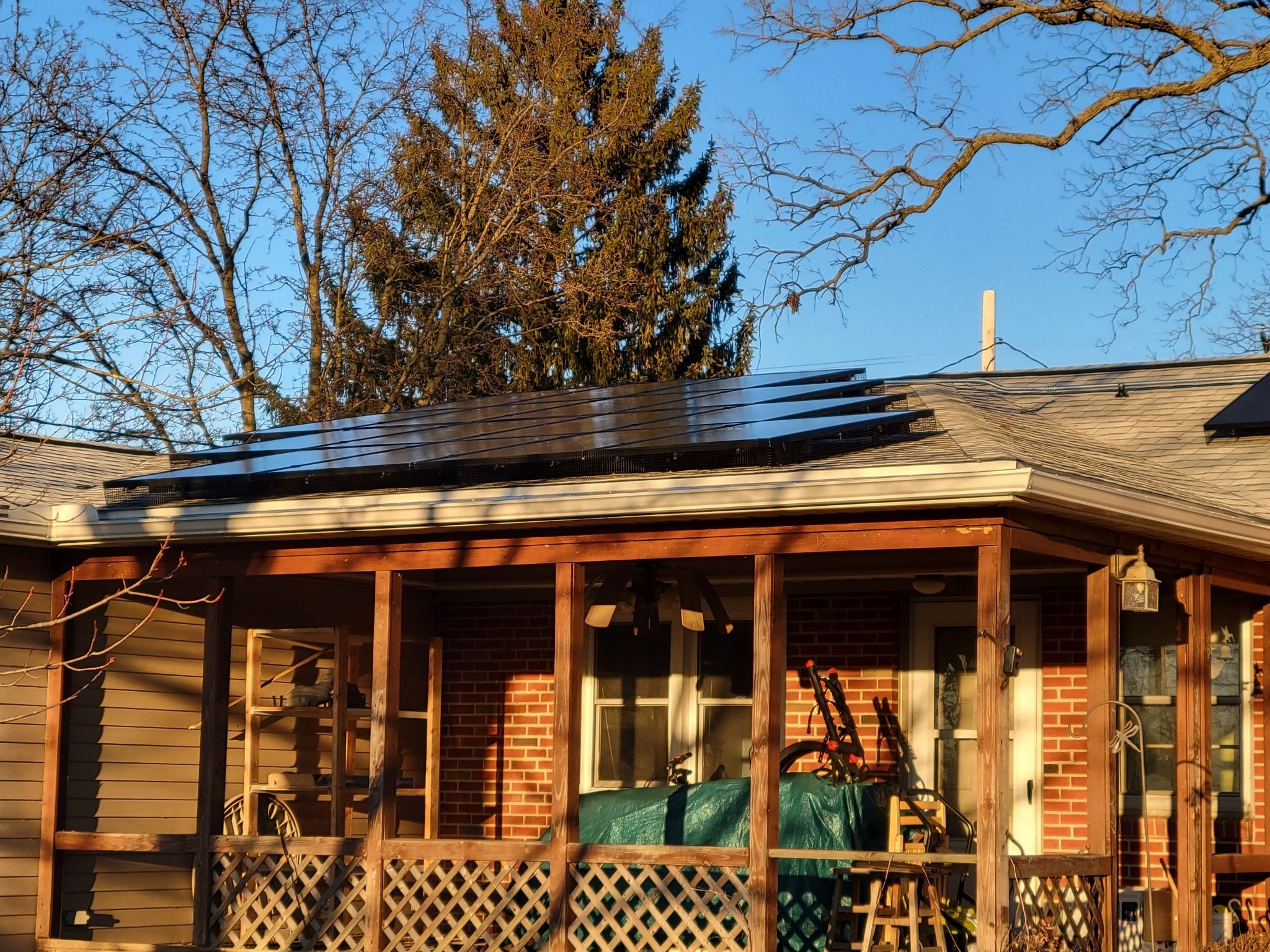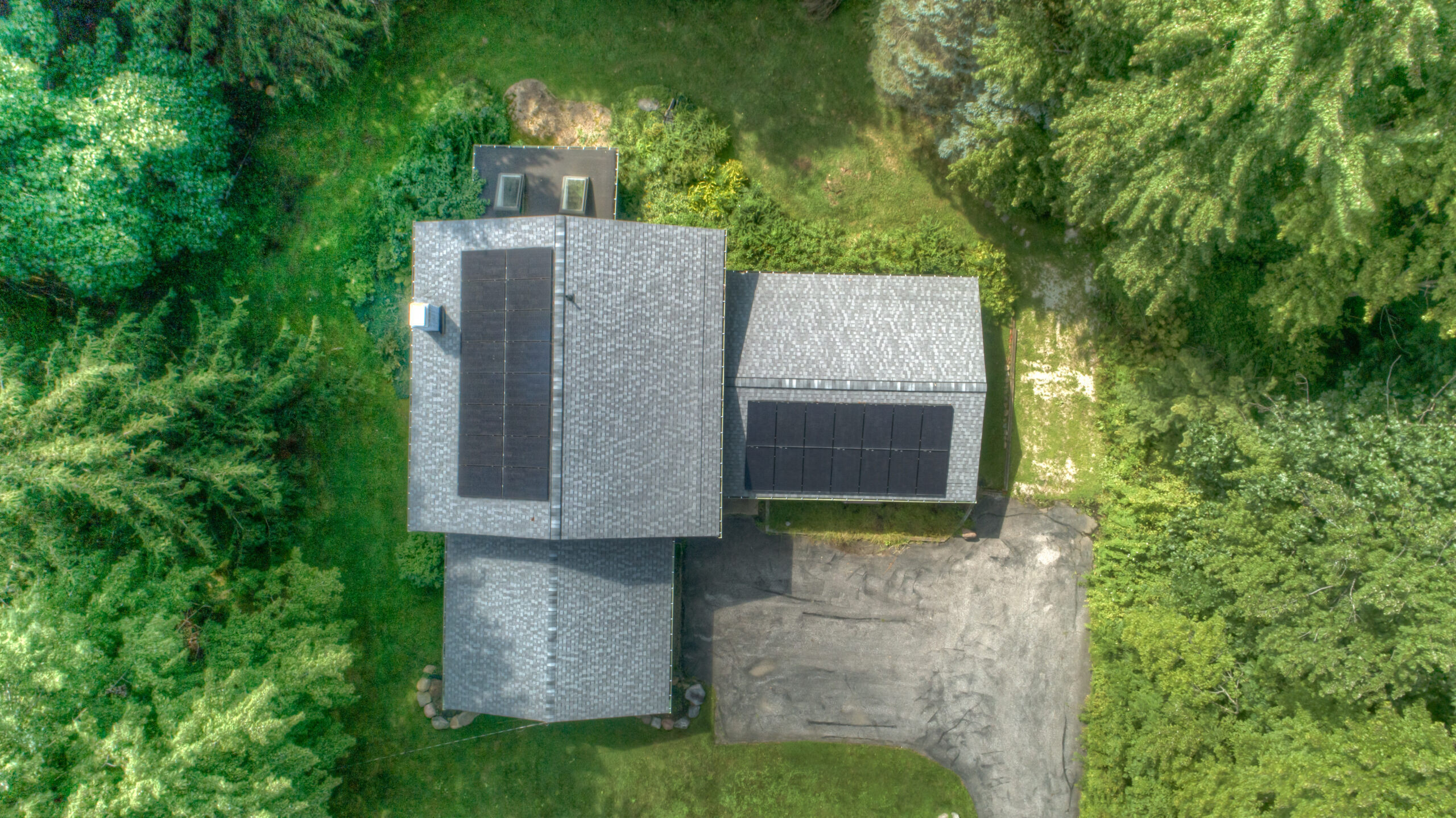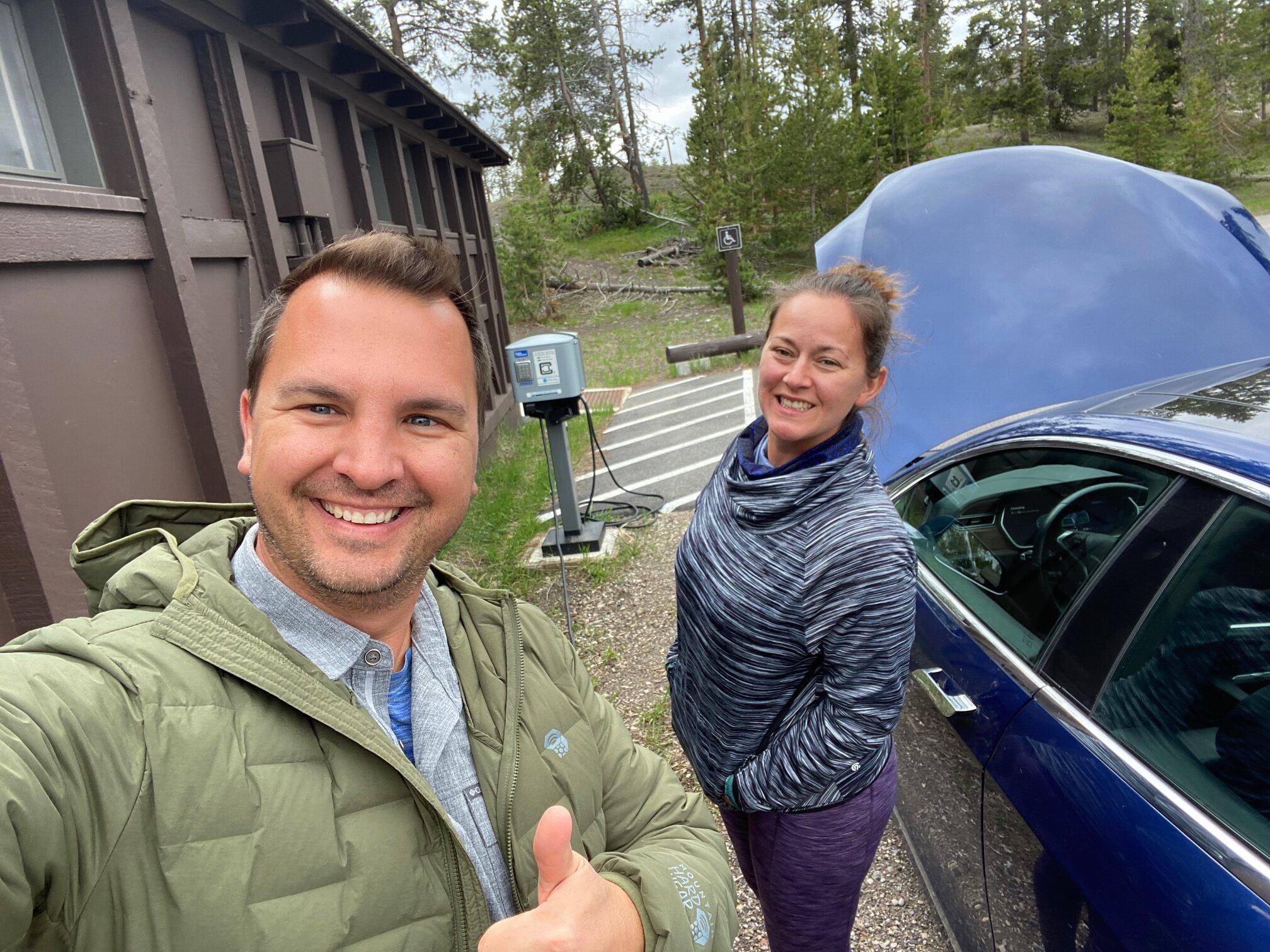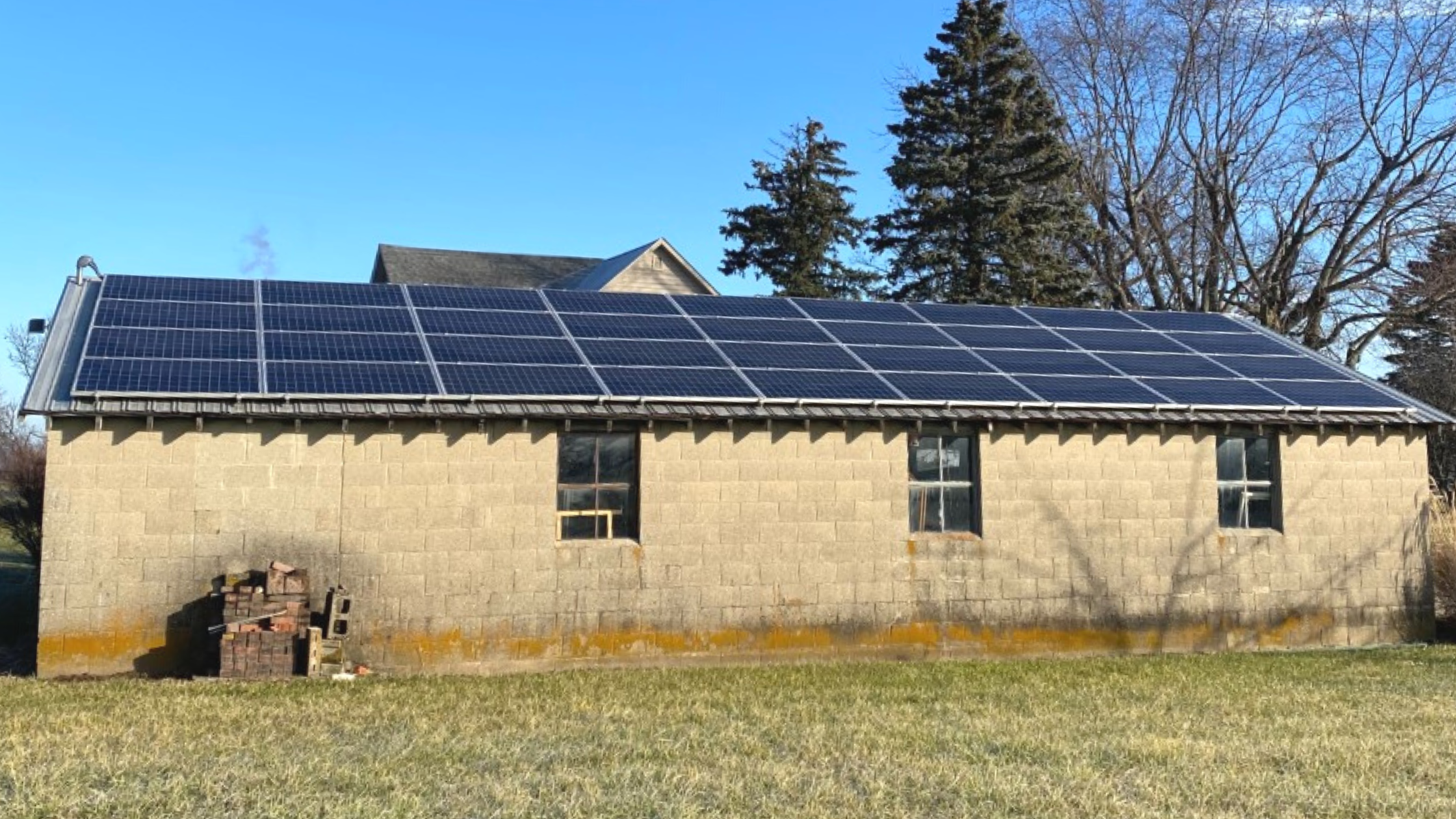Chris and Pete Yost went solar with Third Sun Solar back in 2008. In 2021 the pair signed up to expand their initial system to cover additional electricity use at their home. Like most of our customers, Chris and Pete went solar for two reasons: for the environment & to increase their resiliency.
Historical Motivations
Chris and Pete Yost live in London, Ohio, a rural area outside of Central Ohio.
In 2008, they went back and forth, evaluating different renewable energy options for their farm. After learning about the maintenance requirements associated with residential wind generators, they settled on installing a solar energy system at their home.
The initial installation included a roof-mounted solar array and a battery bank of 16 Deka batteries.
While there were incentives available at that time, it was still a significant investment. Pete says: “I kept joking that my new Corvette is sitting on top of the garage” The family does not own any Corvettes, but they have made a commitment to living a clean energy lifestyle.
Back in 2008, they had a friend in the federal government who explained the grid’s vulnerabilities at that time. They wanted to have a plan in place if there ever was a big electrical failure.
As early adopters, the Yosts were able to get Solar Renewable Energy Credits (SRECs) locked in at a high rate, which has contributed to the financial payback of their solar and battery system. Unfortunately, today SRECs are not much of an incentive in Ohio. Read more about that here. But with federal incentives and decreased prices with widespread adoption, the solar market remains strong, despite the loss of value in SRECs.
Looking Abroad
Another frame of reference that Chris and Pete had back in 2008 was forward-thinking countries.
They had done some traveling to countries where the adoption of renewable energy technologies was already widespread. In Europe at the time, renewable energy sources were pervasive.
They saw substantial solar fields in countries with similar -if not cloudier- climates to the United States, which made it evident that solar energy was something to consider back home.
Now, any new construction in Germany requires a minimum of 2 solar panels for solar hot water heaters. Pete says, “When you go by housing developments you see solar panels on all the homes.”
Solar Energy Storage Case Study: An Area Prone to Outages
On their rural farm outside of Central Ohio, Chris and Pete do experience power outages. The outages are not necessarily lengthy, but when they happen, the farm has maintained power.
And when the power goes out? Life goes on as usual.
They run what they must on the batteries and have necessary appliances set up to work with the system – water pump, geothermal, microwave, refrigerator, and a few lights.
With conservative energy use, they can go three days with no utility power when there is no charging of the batteries. And longer when the solar system is charging the batteries. Sometimes they let the batteries cycle on their own, which is important for the technology.
A Growing Community Powered by the Sun
They may have been the first, but the Yosts are not the only ones in their family with a solar energy system. Pete has a brother in Ohio who put in a solar system a couple of years ago. Their daughter in Iowa has gone solar, too.
Chris and Pete are in the group that we think of as the early adopters of solar energy. In 2021 as they expand their existing solar array, they join an even more significant number of Ohioans turning to solar power to meet all of their energy needs.


